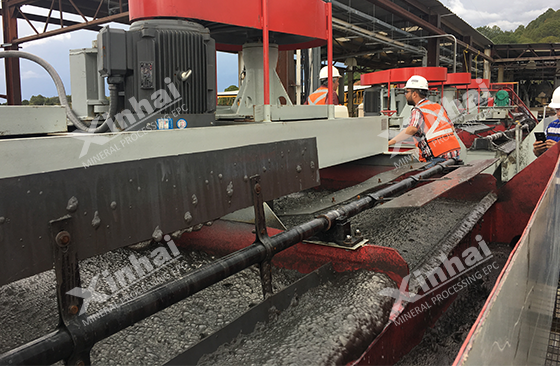Most non-ferrous metals are metal sulfides ores, such as lead-zinc ore, copper sulfide, which often coexist with a large number of pyrites. Pyrite is the main raw material for industrial sulfuric acid, but China is a leading manufacturer and consumer of sulfuric acid, so the comprehensive utilization of pyrite plays an important role in lead-zinc tailings recovery. At the same time, improving the recovery of pyrite in non-ferrous metal sulfide ore has the good influence on the whole national economy and mining enterprises.

According to the conventional flotation practice, pyrite is a kind of sulphide with good floatability, which is easily inhibited by lime, sodium hydroxide and sodium cyanide in alkaline environment. Therefore, people often add sufficient lime to the grinder, then preferentially separate lead, zinc, copper and other metals. According to the inhibiting principle of pyrite, iron pyrite can generate a strong hydrophilic thin film with hydroxyl ion on pyrite surface under the alkaline environment. After the inhibition operation, pyrite must be activated in the process of lead-zinc tailings recovery. The conventional activators include sulfuric acid or a large amount of copper sulfate and sodium carbonate. Sulfuric acid has strong corrosive substance, but it is also easy to be over-consumed by carbonate minerals. But because the price of copper sulfate and sodium carbonate is much high and the grade of pyrite is lower, many lead-zinc tailings plants just give up its recycling, which directly wastes resources. It is suggested that using ammonium carbonate to activate the pyrite can obtain the good effect. In a mineral processing plant, the grade of sulfur concentrate reached 40.30%, and the recovery rate was up to 88.64%.
The recovery process of lead-zinc tailings must make good use of various minerals, which not only reduces environmental pollution, but also created economic benefits for enterprises.


 marketing@ytxinhai.com
marketing@ytxinhai.com  0086 13810327080
0086 13810327080 






































































































 CHAT
CHAT MESSAGE
MESSAGE

